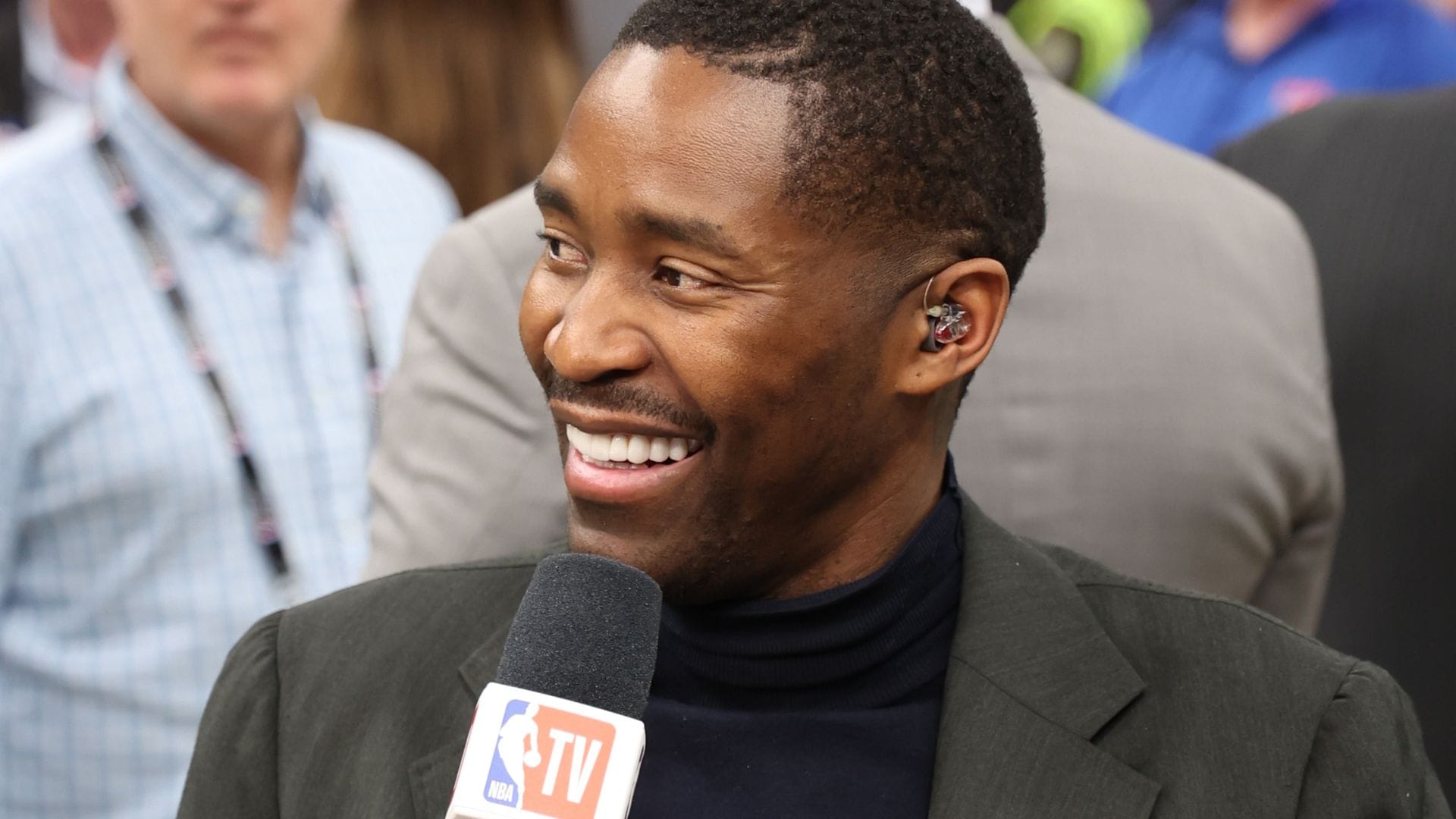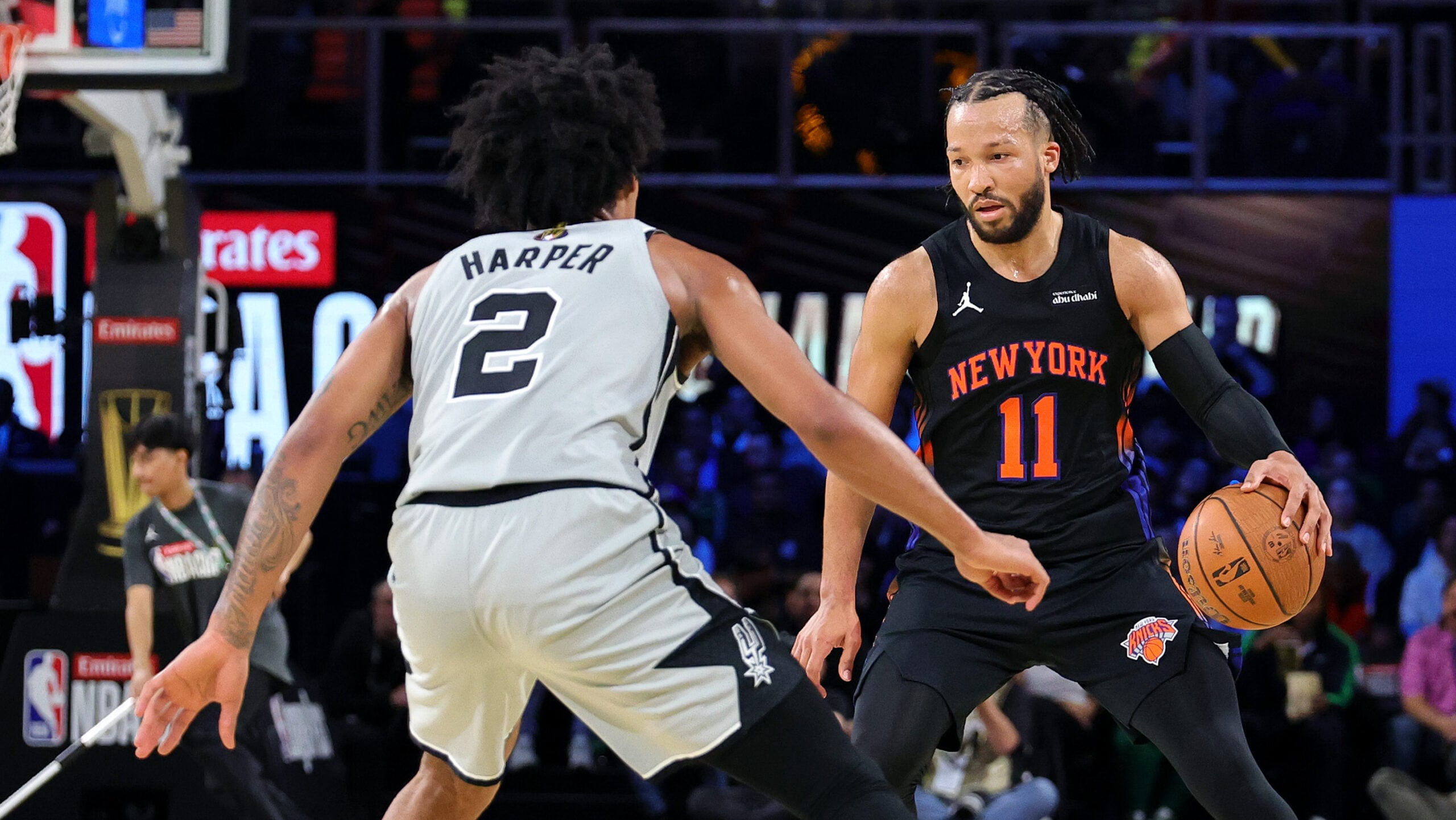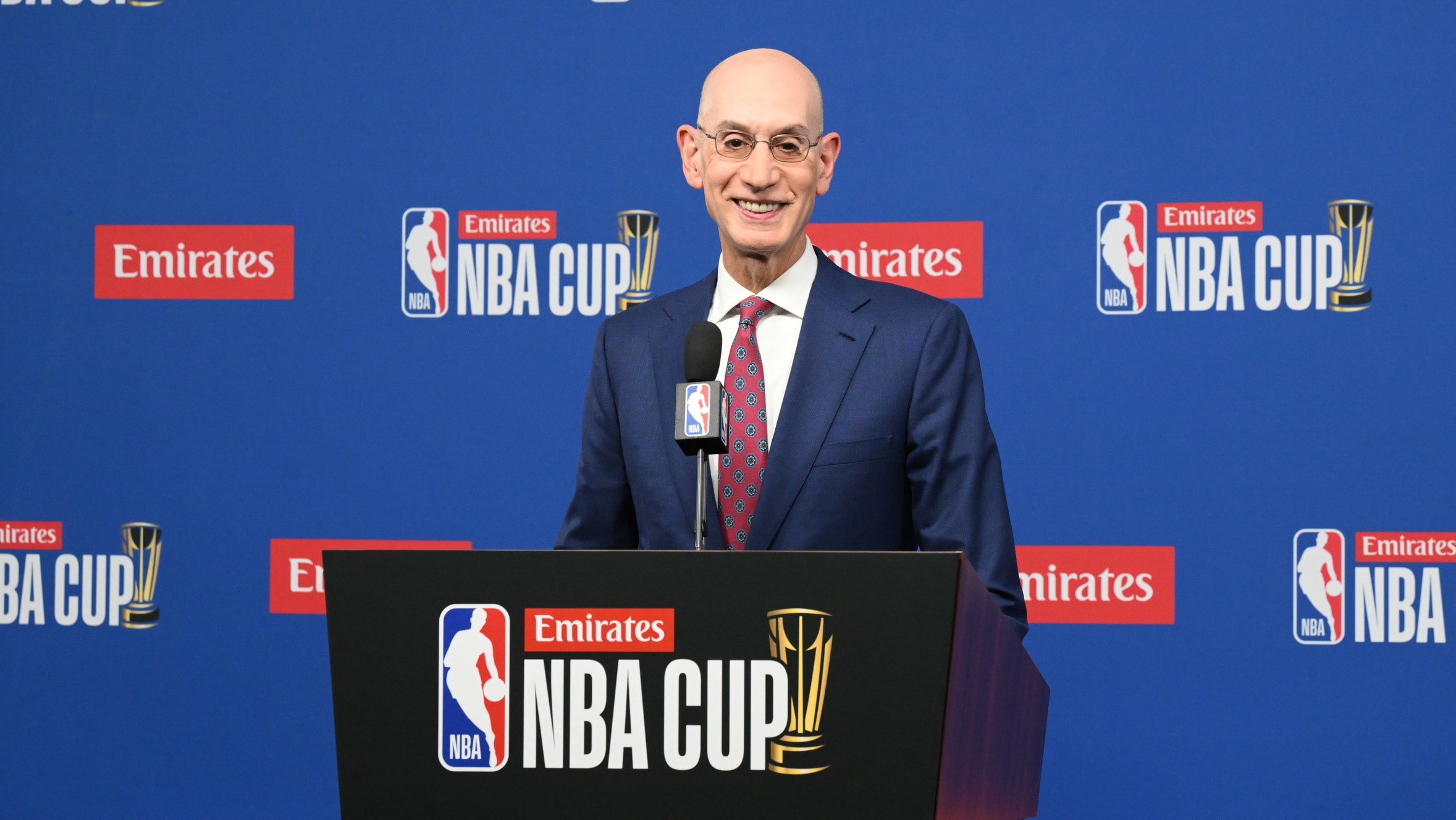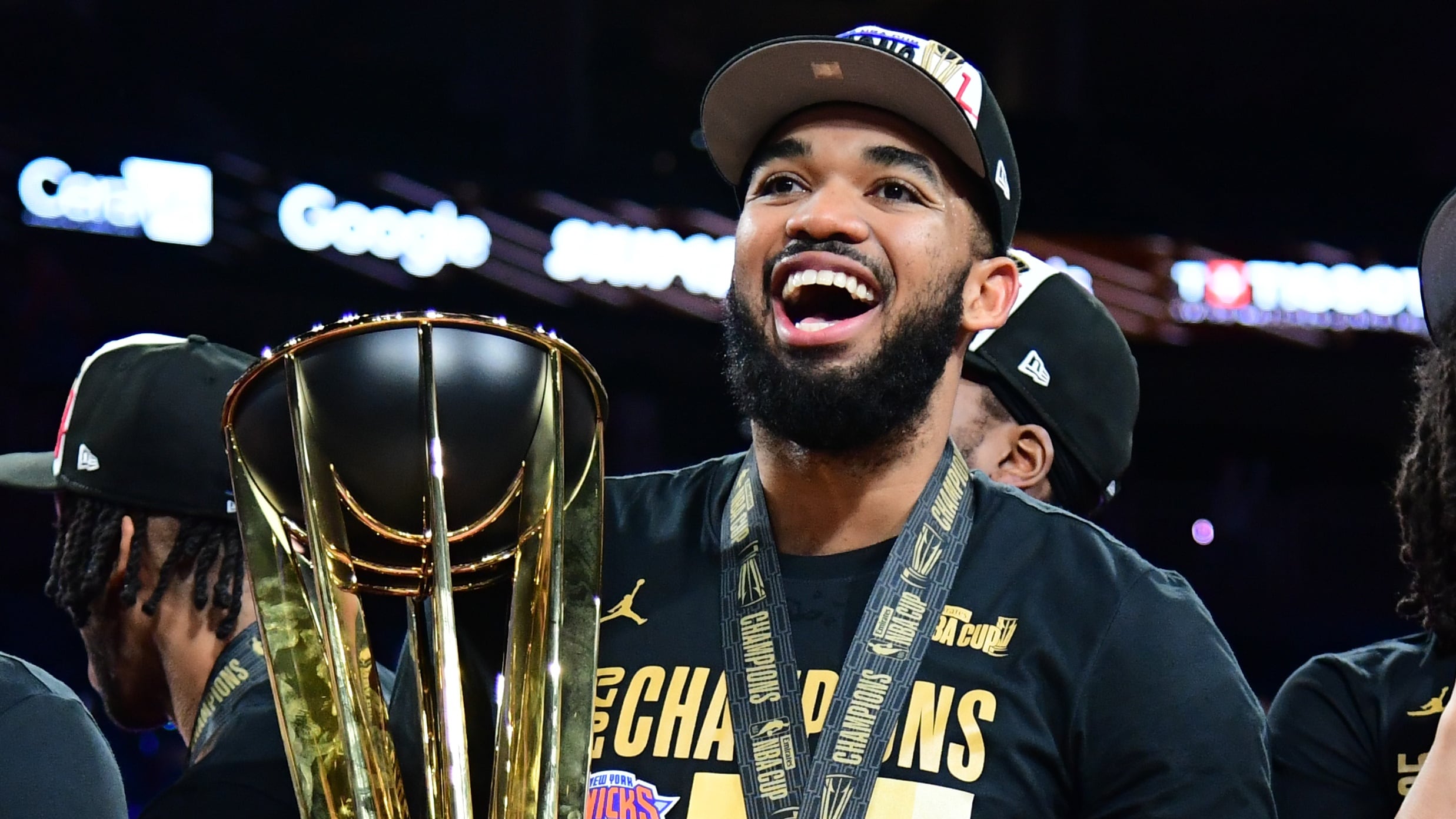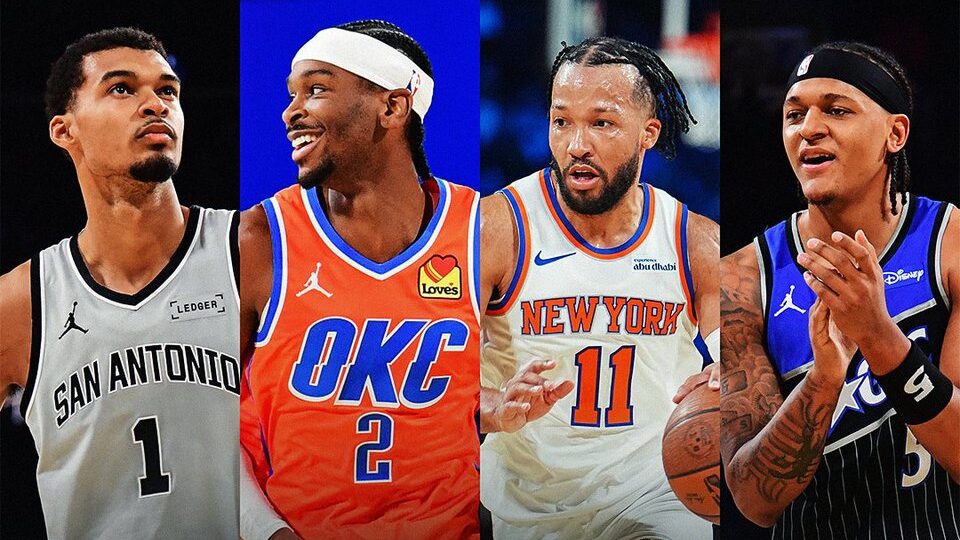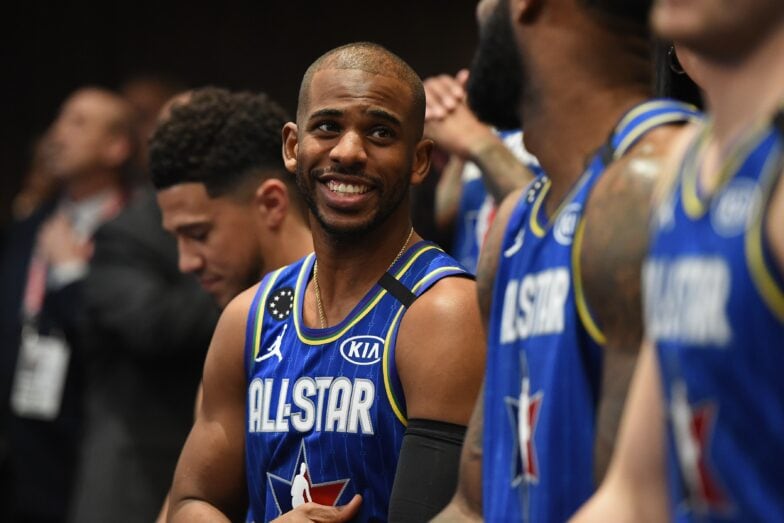
At the age of 34, Chris Paul is having one of the most efficient seasons of his career, leading the Oklahoma City Thunder in what some might consider a surprisingly successful season. (Paul would disagree with that consideration, by the way.)
As they begin their post-break schedule with a game against the Denver Nuggets on Friday (8 ET, ESPN), the Thunder are in sixth place in the Western Conference, just two games behind the team that traded Paul, two first-round picks and two pick swaps for Russell Westbrook last summer. OKC is on pace to win the same number of games as it did last season, when it had Westbrook and Paul George (who finished third in MVP voting).
For his efforts in leading that kind of recovery, Paul was selected to his 10th All-Star Game, four years after his previous appearance. And on Sunday, he had his highest-scoring All-Star performance of the 10, shooting 7-for-11 from 3-point range and finishing with 23 points for the victorious Team LeBron.
At All-Star weekend in Chicago, NBA.com sat down with Paul at the launch event of PlayersTV, a network (in which Paul is an investor) for athlete-driven content set to launch in March on Samsung TV Plus. He discussed the need for such a platform, and then the conversation turned to basketball, pick-and-roll defense and mid-range shooting, teaching and learning from Kobe Bryant, and mentoring Shai Gilgeous-Alexander.
NBA.com: What are you guys trying to accomplish with PlayersTV?
Chris Paul: I think one of the biggest things was being able to provide content for guys who may otherwise not be able to have their stuff on ESPN or other platforms. What’s really cool about is just about everybody who does any type of entertainment or advertising, they use athletes. So this is a place where content can be created and be a hub where athletes have an opportunity to tell stories.
Are you going to be in the background, or will you be a content creator yourself?
I’m definitely a content creator. Absolutely. The cool thing about it is that a lot of guys already have production companies and different things going on. And now, we have somewhere their stories can live and we’re able to tell the stories that sometimes other people try to tell for us.
The guy who may be a role player for eight or nine years may have a story to tell. Now there’s somewhere it can live. And guys can support one another and bring people to the platform.
So if you’re creating content, what might we learn about you?
Who knows? It’s not just me, either. Fortunately, I’m able to tell my story day in and day out. It’s about all the athletes as a whole and seeing what we can do together. It gives more and more players a voice and an opportunity for fans to see them.
Gerald Green, a teammate of mine in Houston, just popped into my head. Fans loved him. Loved him. And there are a whole lot of layers to Gerald. But sometimes he can’t tell his story.
Are you surprised at all with how well the Thunder have played this season?
Nope. I’m surprised our record isn’t better. I’m wired like that.
But going into the season, there had to be more questions than the season before in Houston. When you were with the Clippers, there was always a lot of talent. There wasn’t a greater degree of doubt this time?
I know me. I know y’all got a job to do. Y’all are going to predict this [or that]. But you got to play the games. I’ve never stepped on the court in a game like, “We’re probably not going to win this.” But there’s probably guys in the league who do that, you know what I mean? I don’t work like that. No.
You’ve been Mr. Clutch this season.
We’ve played a lot of close games. If you play a lot of close games, you’re going to score.
Well, you’ve also shot 55% on clutch shots.
OK. Well, that’s pretty good.
If you’re running a pick-and-roll late in the game, how do know that you can get to your spot?
Because it’s a copy-cat league. It’s a copy-cat NBA. So, in my last year with the Clippers, we went to a drop. You know what I’m talking about when I say drop.
The big defender drops back into the paint to protect the basket.
Me and DeAndre Jordan, the two years before that, we were the best pick-and-roll defenders in the league.
When he was playing up …
When he was playing up, because we used to play like that. Then in my last year with the Clippers, we went to the drop. And me and DJ were actually talking about this the other day. We were mad when we came into camp and went to that drop. But it’s a copy-cat league. Everybody went into this drop to play the percentages.
Right. And over 82 games, over 48 minutes, it makes sense. But there are certain times when you can’t let a guy get to an open shot.
I also think, “Win the game. Win the game.” You can do all the analytics that you want to, but at the end of the day, win the game. So if I perfect this shot and that’s the shot that you’re giving me, I’m going to take it. Then, if you come up, now I’m going to adjust to that. But the thing about the NBA, every single night, how do they guard the ball screen now?
They drop, except for one or two teams. Chicago plays up.
They play up. And it’s funny, when you play against them and you watch the games, people start turning the ball over, because they don’t know.
Right. They lead the league in opponent turnover percentage.
Do they? That’s because guys now don’t know the reads. That was the old NBA, when everybody guarded like that.
That’s a good point. Guys are so used to playing against a drop now and so used to the reads against a drop coverage …
It’s like having the answers to a test. If I know the guy is back, I’m getting right there to shoot it.
But playing against a team that brings the big man up, like the Heat when they had the Big Three, is a lot different.
The big man is up, the low man is over.
So, Shai is my man. That’s like my little brother. Shai, when we play against those teams that are up, he’s like, “C, what’s the read? What’s the read?” And I’ll be laughing, because that was the old NBA. And now it’s a copy-cat league and a lot of bigs will be guarding like Shaq used to guard, just sit back in the paint. So guards know they’re either getting to their floater or, if they’re a 3-point shooter, they’re stopping at the 3-point line.

And you’re a mentor to Shai?
I’ll be real hard on him, though. Last night [the last game before the All-Star break], he got a foul … Jrue Holiday. So Shai watches the games with me. Even after our home games, he’ll come over to the condo and watch games. Shai got a foul on Jrue Holiday in our game last night. And it’s funny, because I didn’t even look at him, but he wouldn’t look at me. So when we got in at halftime, I said, “You good?” And he was like, “I wasn’t even gonna look at you.” Because I have a problem with pump fakes.
I don’t go for pump fakes. You know why? I played against Sam Cassell in my first or second year in the league. And I got three fouls on him in one game, because Sam Cassell would come down, [mimics a pump fake] and lean into me. And then I had an epiphany. I am not a shot-blocker. And I tried to explain this to Shai and he doesn’t understand it. If you don’t jump and you just stand there and contest it, and he makes it? Good shot. But if I jump, now you’re either going to go by me or lean into me. So I don’t go for pump fakes.
The other day, after he hit a mid-range game-winner, Spencer Dinwiddie said that Kenny Atkinson doesn’t want him shooting mid-range shots unless it’s at the end of the game. And I get that, because over 82 games or even 48 minutes, if he shoots 40% from mid-range, that’s not a good return on 10 or 100 shots.
You’re different. You’re shooting 55% from mid-range. But even for a 40% mid-range shooter, in a late-game situation when you need a bucket, that may be where you can get the cleanest look.
Dennis Schroder … I don’t know what his percentage is this season …
Note: Schroder has shot a solid 47% from mid-range, the 11th best mark among 67 players with at least 100 mid-range attempts.
But coming into the season, I don’t think it was great. But just like anything, I got to show you that I can do it. If I show you that I can do it, then they’re going to be cool with it. But if you’re not good at it, don’t shoot it.
Because I’m also a firm believer that if you got a 3-point shot and you take one foot in, I hate that shot. If you’re going to be that close to the 3-point line, you might as well shoot a 3.
Right. Your 2-point shots are generally 18 feet and in.
Note: 93% of Paul’s mid-range shots have come from 18 feet and in.
Right. I’m gonna get to my spot. And referencing Kobe, and I tell all the young guys this … Kobe against the Phoenix Suns in the playoffs, I think it was overtime …
The game-winner from the elbow.
Right. He didn’t even look at the rim one time. When I’m dribbling in the lane, there are spots on the floor, I don’t have to look at the rim once you hit the spot.
The one thing about that shot that I always remember is the way it ripped through the net. It was one of the most pure swishes you will ever see.
Just look at him when he gets the ball. He never looked at the rim.

That reminds me. One of my distinct memories from covering the 2008 Olympics was you and Kobe talking about pick-and-rolls on the court before one of your exhibition games in Macao or Shanghai. Do you remember that?
Vaguely. But around that time, the snake that everybody does, I started doing that with Tyson my second year in the league.
Note: The snake is where a pick-and-roll ball-handler changes direction after dribbling past the screen in order to keep his initial defender on his back.
I just came up with it in practice, because back then, everybody used to go under on me, because I couldn’t really shoot … I could shoot, but it’s just anxiety when you’re young. You can shoot, but you just don’t make in in the game.
So everybody used to go under [the screen] on me. So we had Tyson start setting it at an angle, and I realized that if I cut back, the defender was going to be behind me and it was going to force a 2-on-1. And that was when I was a lot more athletic, so I would either finish with a layup or throw the lob to Tyson. Now, at this point, I snake, I don’t want to get to the rim.
So that’s what you were talking about with Kobe?
Yeah, I was definitely talking about that, getting the defender on my hip.
What were you learning from him in that same time frame?
One of the biggest things Kob made me pay attention to was footwork. And it’s crazy, because my percentages this year in the mid-post are awful. But I’ve always been able to play off left-foot or right-foot pivot.
Note: According to Second Spectrum tracking, Paul has shot 2-for-11 (18%) on post-ups this season after shooting 63-for-128 (49%) over the last three seasons.
In our GM Survey, you always get a lot of votes as the active player that will make the best head coach someday. Do you want to coach?
No chance. It’s the time. I don’t want to travel like that. I want to be around the game as much as possible. I watch every game. But I want to be around my kids and family.
* * *
John Schuhmann is a senior stats analyst for NBA.com. You can e-mail him here, find his archive here and follow him on Twitter.
The views on this page do not necessarily reflect the views of the NBA, its clubs or Turner Broadcasting.

